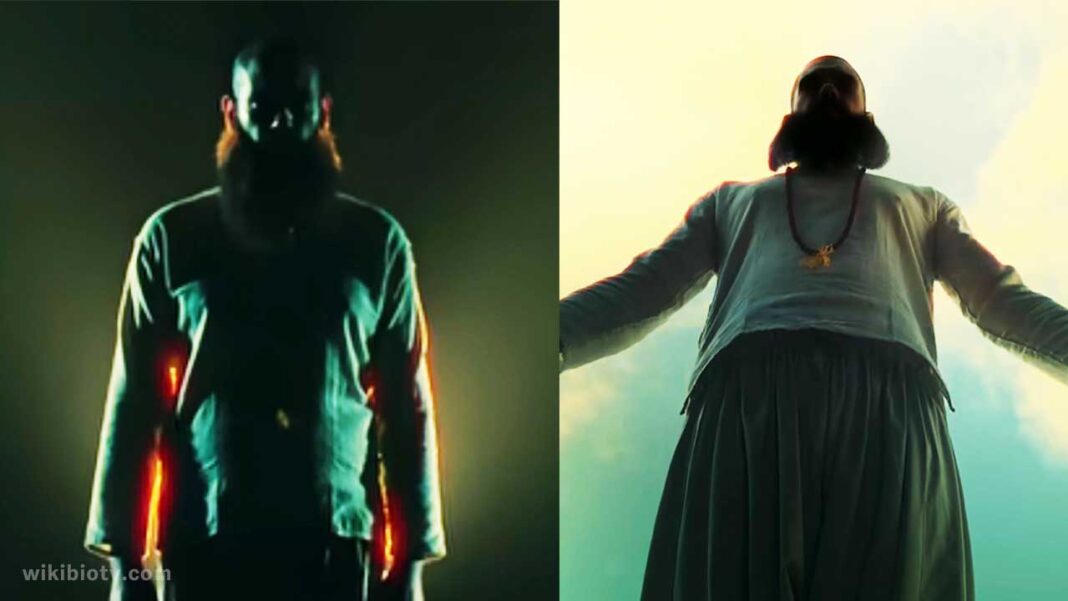
If you’re a fan of crime documentaries, you will love “The Doomsday Cult of Antares de la Luz,” a newly released crime documentary on Netflix. Directed by Santiago Correa, it centers on Ramón Gustavo Castillo Gaete, a Chilean musician who went by the name Antares de la Luz (Antares of the Light). In 2009, he created a group in Colliguay, Chile, that believed that the end of the world was near. He achieved this by persuading them that he was Jesus Christ reborn. He manipulated his cult members to commit a heinous crime and subsequently killed himself before he could be captured. This show interviews the former cult members and investigative officers who busted this cult.
This true crime documentary film is exciting because it really gets to you. It brings home the point that those who are vulnerable can be easily picked on by charming and manipulative people and forced into doing things against their own wishes. The stories told by former members of the cult are puzzling and horrifying to listen to. What comes out later in the film is even worse than anyone would have expected. No matter how familiar you might believe yourself with these groups, the many details about their operations will amaze anybody. This type of leader’s brainwashing methods are indeed very eerie. Let’s delve into the story of Alvares de la Luz and if you need full explanation about the documentary film read here.
The Story
As it is a documentary, everything is purely fact-based. Ramon Castillo Gaete, also known as Antares de la Luz later in life, hailed from Chile and was an ordinary person working as a teacher with strong opinions on social and political issues. Among his friends, the man was famous for playing musical instruments. Since he was a child, Ramon experienced unexplained physical discomforts that persisted throughout his lifetime. To alleviate the pain, he would take ayahuasca, a traditional drug made of plants found within the locality that temporarily relieved him of these symptoms every time they recurred.
Once he had become Antares, everything changed—he thought himself unique, thus desiring others to know this too. Carlos Castaneda’s writings inspired him, while Mayan civilization intrigued him, prompting a spiritual consciousness awakening among people like never before seen. His buddies were there for support, and eventually many followers came about, especially amongst those who had been partaking in hippie activities because of their interest in spirituality.
Pablo Undurraga was Antares’ right-hand man and his biggest supporter. One day, he saw Antares as a godly figure while tripping on Ayahuasca. So, Antares affirmed that he was God who had come again to save the world from evil. From then on, people regarded him as the head. He went from living at Pablo’s house to living in his own place, where he made strict rules for those who followed him. Their belongings were taken away; they had to shave their heads and cut ties with anyone outside of the group. He created a cult in which everyone served him and believed in the Mayan calendar, according to which the earth would end in 2012. Controlling everything around them with strict rules and even killing his own baby were just some of the many crimes he committed. Many still remained loyal to him despite being disappointed that the world did not come to an end as he had prophesied; they were unable to see due to their devotion.
Actors Performances
As it is a documentary, it does not have many actors. However, Orlando Alfaro does a fabulous job portraying Alvares. What makes “The Doomsday Cult of Alvares de la Luz” a powerful documentary is its subjects’ testimonies. Natalie’s narrative of her time in the group is especially profound, as she shows both vulnerability and strength that deeply resonate with viewers.
Former members who were interviewed provided important insights about how this cult operated and why people stayed trapped there psychologically. They speak candidly about what happened to them while they were involved with this cult, painting an unsettling picture of the manipulation that took place around them. Even authorities such as police officers or journalists seem uncomfortable or frustrated when dealing with these cases because bringing cult leaders before justice proves to be difficult.
Direction and Technical Aspects
Santiago Correa has done a great job in the direction, as the documentary successfully informs as well as creates a sense of eeriness. The storytelling is on point. Interviews are combined with archival footage and chilling recreations in order to tell an interesting story. It is a little slow in the beginning, so the audience has time for the testimonies’ significance to register. Additionally, this movie employs visually dark settings that match its dark theme.
When it comes to editing, this film blends interviews and archival materials together seamlessly, so they seem like part of one continuous narrative thread. Sound design also deserves mention here—ominous music along with creepy soundscapes really help create that feeling of doom throughout the whole thing. The cinematography is done expertly, especially during the enactment scenes.
Audience Appeal
A lot of people will find “The Apocalyptic Cult of Alvares de la Luz” interesting. The story is haunting, and the cult’s enigmatic downfall makes it even more so for those who love true crime documentaries. It is also captivating for anyone who wonders why individuals join cults or what methods leaders use to manipulate followers.
Nonetheless, there are moments that may be disturbing, particularly for people who cannot handle violent or abusive scenes. If you’re one such person, then I suggest watching it carefully.
Final Thoughts
Not only did this incident have a profound effect on individuals and their families who were brainwashed and abused, but it also impacted Chilean legislation and society as a whole. It drove people to consider how they could better regulate religious or spiritual groups, compelling them to take more stringent measures for the protection of children’s rights as well as their safety.
Upon discovering that Antares’ doomsday prediction was untrue, Pablo and Natalia reported him to the authorities for crimes such as infanticide. He fled to Peru following the disintegration of his cult, but many people were apprehended. Pablo and Natalia gave themselves up voluntarily. Later, in Peru, Antares took his own life. Despite being deemed by specialists to have been brainwashed while in the cult, they were still held accountable for their actions. Pablo received a sentence of three years; Natalia got five years but served only two on supervised release. The rest were put on probation and are now being helped back into society.
Different types of people will find this documentary interesting. It is designed for those interested in history or social psychology, particularly with regards to the operation of cults, mind control, and its effects on individuals. Additionally, it suits crime enthusiasts and anyone curious about police investigations into cult-related stories.
This documentary is a must-watch for anyone interested in the darker sides of human psychology and the ever-present threat of extremist ideologies.





